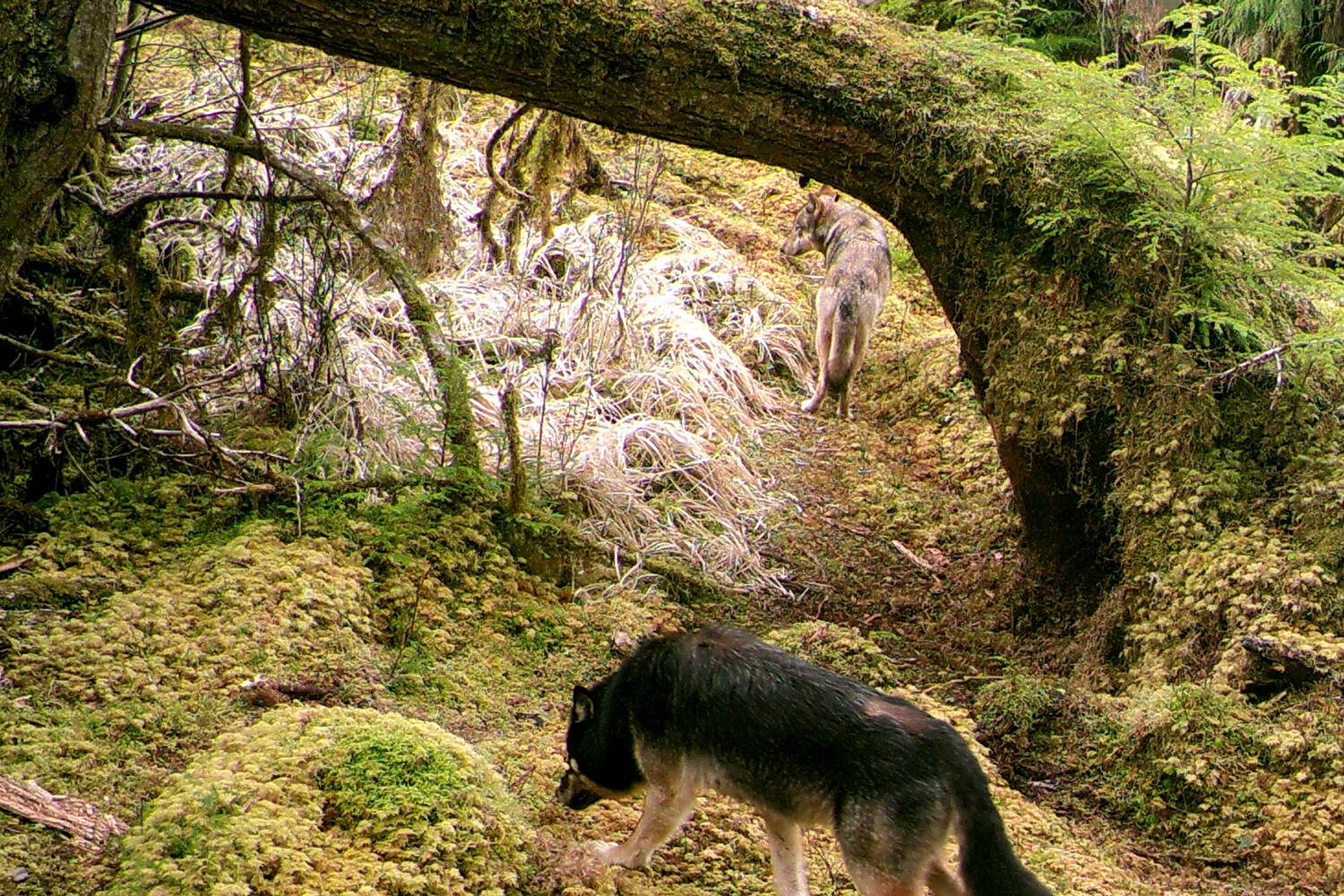This story has been corrected to note Prince of Wales wolves represent less than 20% of the subspecies population in both Alaska and British Columbia. The initial version of this article neglected to include British Columbia wolves.
The U.S. Fish and Wildlife Service has again rejected a request to list Southeast Alaska’s Alexander Archipelago wolves as endangered or threatened.
The wolves, found in Southeast Alaska and British Columbia, range among the region’s large, old trees and are a subspecies of gray wolves.
Putting the wolves on the Endangered Species List, either as endangered or threatened, likely would have resulted in new restrictions on development, logging and construction in the region, and the state of Alaska opposed the idea, which was put forward by three environmental groups.
“Alaska is pleased with the Service’s decision that listing the Alexander Archipelago wolf is not warranted at this time,” said Commissioner Doug Vincent-Lang of the Alaska Department of Fish and Game by email. “The Service found these wolves are not at risk of becoming endangered with extinction, and that Alaska’s management of these wolves is sustainable.”
It’s the third time since 1993 the federal government has declined to put the wolves on the Endangered Species List despite petitions and lawsuits filed by environmental organizations. Prior petitions were rejected in 1997 and 2016, but the Fish and Wildlife Service had indicated that it might decide otherwise this time around. In 2021, it published a notice saying that a listing might be warranted.
It concluded otherwise on Tuesday: “The extensive review process found that Alexander Archipelago wolf is not currently endangered throughout its range, nor likely to become so within the foreseeable future,” the agency said.
The official rejection notice will be published Wednesday in the Federal Register.
Cooper Freeman is a senior advocate for the Center for Biological Diversity, a group behind all three Endangered Species List requests.
“We’re reviewing the impacts of the decision, but the Fish and Wildlife Service continues to fail to protect these unique and imperiled wolves,” he said, adding that his organization will “continue to do everything possible to keep them from sliding into extinction.”
Environmental groups have been particularly concerned with wolves on Prince of Wales Island, which are still subject to legal hunting and trapping.
Those wolves roam among the island’s old-growth forests and hunt Sitka blacktail deer between logging parcels.
Resident hunters and state biologists have concluded that the hunts are sustainable, a belief challenged by environmental groups who say the state is overestimating the wolf population. That belief has driven the request for federal protections.
In its analysis, the Fish and Wildlife Service concluded that the Prince of Wales Island wolves are the most threatened group of wolves in Southeast Alaska, but scientists said that even they demonstrate “stable population trends.”
Even if the Prince of Wales wolves died off — something that occurred in one of three scenarios analyzed by Fish and Wildlife — those wolves represent less than a fifth of all wolves in the subspecies in Southeast Alaska and coastal British Columbia.
That was a key finding, said environmental groups familiar with the new decision.
“Thus, after assessing the best available information, we conclude that the Alexander Archipelago wolf is not likely to become endangered within the foreseeable future throughout all of its range,” the agency said.
• James Brooks is a longtime Alaska reporter, having previously worked at the Anchorage Daily News, Juneau Empire, Kodiak Mirror and Fairbanks Daily News-Miner. This article originally appeared online at alaskabeacon.com. Alaska Beacon, an affiliate of States Newsroom, is an independent, nonpartisan news organization focused on connecting Alaskans to their state government.

